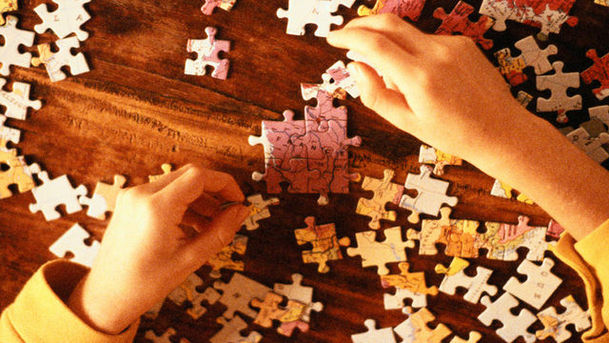Going to Pieces in the Box

Janet Ellis, host of the 1980s Children's BBC series Jigsaw, presents a celebration of the history and the art of the jigsaw puzzle. More art - typically sentimental, traditional art - has made its way into more homes via the jigsaw puzzle than virtually any other medium. While it has since become the purveyor of comforting landscapes to the masses, it started life as an educational tool championed by the likes of philosopher John Locke. In 1760, London mapmaker John Spilsbury mounted one of his maps on hardboard and cut it into pieces to help children learn geography. Janet tells the story of how, since then, it has become such a core feature of childhoods across the world. She hears how jigsaws hit their first major peak during the Great Depression, when 10 million a week were bought by families looking for cheap pastimes, and how they were used by immigration officers on Ellis Island to determine who should be allowed into the land of the free. Janet also explores how popular culture has flirted with the jigsaw, in novels and films as diverse as Mansfield Park, Citizen Kane and, most powerfully, Georges Perec's novel, Life: A User's Manual. She hears from academics and enthusiasts including Margaret Drabble, who explain the jigsaw's great allure. Janet hears how jigsaws continue to be incredibly popular, having evolved into 3-D puzzles and of course made their way onto the internet, where no young children's games site is without one.